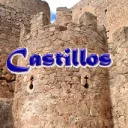• TORTOSA
 Localidad a orillas del rio Ebro con un pasado histórico que han dejado numerosas muestras del mismo desde los romanos, pasando los árabes, la corona Aragonesa, y los reinados de Carlos I y Felipe II entre otros, tanto en la arquitectura civil como religiosa.
Localidad a orillas del rio Ebro con un pasado histórico que han dejado numerosas muestras del mismo desde los romanos, pasando los árabes, la corona Aragonesa, y los reinados de Carlos I y Felipe II entre otros, tanto en la arquitectura civil como religiosa.
Puedes efectuar, como sugerencia estas visitas:
• El Porche del Trigo – Lonja, antiguo recinto gótico del S. XIV.
• Diputación General, edificio renacentista construido entre los años 1576 y 1578.
• Palacio Jacinto Oliver de Botaller Zaragoza, palacio gótico de finales del S. XV.
• Palacio Episcopal, construido entre los S. XIII y XIV con una capilla gótica que en su interior.
• Catedral de Santa María, se levanto la catedral románica inicial (1158-1178) y gótica posteriormente del 1347- S.XVIII. Con su claustro donde en la puerta al jardín se encuentran los capiteles tardo románicos historiados y las laudas sepulcrales. Y su Museo comenzando por el antiguo palacio del Obispo del S. XII, donde comienza la exposición permanente.
• La Iglesia de Santo Domingo, construida en el S. XVI
• Real Colegio de San Jaime y San Matías con sus espectacular patio con la decoración de los reyes de la Corona de Aragón. Para la educación de los moriscos.
• Real Colegio de San Jorge y Stº Domingo, dedicado en sus orígenes al estudio de la teología
• Portal de Romeu, era la puerta de entrada para los peregrinos procedentes de Oriente y que se dirigían al Camino de Santiago. Y sigue siendo la salida de la ciudad para los peregrinos por el Jacobeo del Ebro.
• Palacios góticos de: Despuig, Oriol, y Campamy en la calle de La Rosa.
• Y el Castillo de San Juan o de la Suda/Zuda ocupa el lugar de la antigua acrópolis romana, es el testimonio arquitectónico de la ciudad andalusí, construido en el S.X, en época de Abderramán III. Tras la dominación árabe, reconquistado por el conde Ramón Berenguer IV en 1148.
Puedes descargarte el PDF con información, planos, fotos y contactos.
Pulsar sobre la imagen con el botón derecho y guardar como…para descargar el archivo PDF para tu tablet o smartphone.
• TORTOSA
City on the River Ebro with a historical past that have left numerous examples of it from the Romans , through the Arabs, the Aragonese crown, and the reigns of Charles I and Philip II among others, both civil and religious architecture .
You can make as suggestion these visits:
• The Porch Wheat – Lonja, old Gothic enclosure S. XIV.
• General Council , built between 1576 and 1578 Renaissance building.
• Palace of Botaller Zaragoza Jacinto Oliver, Gothic palace of the late S. XV.
• Bishop’s Palace , built between S. XIII and XIV with a Gothic chapel inside.
• Cathedral of St. Mary, the initial Romanesque cathedral (1158-1178) and later Gothic rose 1347 . With its cloister where the door to the garden are the historiated capitals and late Romanesque tombstones tombstones. And the museum beginning with the ancient palace of the Bishop of S. XII, where the permanent exhibition begins.
• The Church of Santo Domingo, built in the S. XVI
• Royal College St. James and St. Matthias patio with spectacular decoration of the kings of the Crown of Aragon. For the education of the Moors.
• Royal College of St George and St º Domingo, originally dedicated to the study of theology
• Portal Romeu was the gateway for pilgrims from East and on their way to the Camino de Santiago. And it remains out of the city for pilgrims by the Jacobean Ebro
• Gothic Convention : Despuig, Oriol, and Campamy Street La Rosa.
• And the Castle of San Juan or the Suda / Zuda takes the place of the ancient Roman acropolis, is the testimony of Andalusian architectural city built in SX, in times of Abderrahman III. After the Arab domination, reconquered by Count Ramon Berenguer IV in 1148.
You can download the PDF with information , maps , photos and contacts.
Click on the image with the right mouse button and save as… to download the PDF file to your tablet or smartphone.
• TORTOSA
Ville sur la rivière Ebre avec un passé historique qui ont laissé de nombreux exemples de ce des Romains , par les Arabes , la couronne d’Aragon , et le règne de Charles I et Philippe II , entre autres , à la fois civil et d’architecture religieuse.
Vous pouvez faire que la suggestion de ces visites:
• Le blé Porche – Lonja, ancienne enceinte gothique S. XIV .
• Conseil général, construit entre 1576 et 1578 bâtiment de la Renaissance .
• Palais des Botaller Saragosse Jacinto Oliver, palais gothique de la fin du S. XV .
• Palais épiscopal, construit entre S. XIII et XIV avec une chapelle gothique à l’intérieur.
• Cathédrale de Sainte-Marie, la cathédrale romane initiale (1158-1178) et plus tard gothique rose 1347. Avec son cloître où la porte du jardin sont les chapiteaux historiés et à la fin de pierres tombales pierres tombales romanes. Et le musée en commençant par l’ancien palais de l’évêque de S. XII , où l’exposition permanente commence.
• L’église de Santo Domingo, construit dans le S. XVI
• Collège royal Saint- Jacques et Saint- Matthias patio avec une décoration spectaculaire des rois de la Couronne d’Aragon . Pour l’éducation des Maures .
• Royal College of St George et St º Domingue, à l’origine dédié à l’étude de la théologie
• Portail Romeu était la porte d’entrée pour les pèlerins de l’Est et sur le chemin de la Chemin Saint Jaques. Et il reste hors de la ville pour les pèlerins de Saint-Jacques par la Ebro
• Convention gothique : Despuig, Oriol, et Campamy rue La Rosa .
• Et le château de San Juan ou la Suda / Zuda prend la place de l’ancienne acropole romaine , est le témoignage de la ville architecturale andalouse construite en SX , en temps de Abderrahman III. Après la domination arabe , reconquis par le comte Ramon Berenguer IV en 1148 .
Vous pouvez télécharger le PDF avec des informations, des cartes, des photos et des contacts .
Cliquez sur l’image avec le bouton droit de la souris et enregistrer sous… pour télécharger le fichier PDF sur votre tablette ou smartphone.
• TORTOSA
Stadt am Fluss Ebro mit einer historischen Vergangenheit, die es zahlreiche Beispiele von den Römern unter anderem verlassen haben , durch die Araber , der aragonesischen Krone, und der Herrschaft von Karl I. und Philipp II. , zivile und religiöse Architektur.
Sie können als Vorschlag machen diese Besuche:
• The Porch Weizen – Lonja , alte gotische Gehäuse S. XIV .
• Allgemeine Rat, zwischen 1576 und 1578 Renaissance-Gebäude gebaut.
• Palast der Botaller Zaragoza Oliver Jacinto, gotische Palast aus dem späten S. XV.
• Bischofspalast, erbaut zwischen S. XIII und XIV mit einer gotischen Kapelle im Inneren.
• Kathedrale von St. Maria, die erste romanische Kathedrale (1158-1178) und später gotischen stieg 1347 . Mit den Kreuzgang, wo die Tür in den Garten sind die Kapitellen und spätromanische Grabsteine Grabsteine. Und das Museum, beginnend mit dem alten Palast des Bischofs von S. XII, in dem die Dauerausstellung beginnt.
• Die Kirche von Santo Domingo, in der S. gebaut XVI
• Royal College St. Jakobus und St. Matthias Terrasse mit spektakulärer Dekoration der Könige der Krone von Aragon. Für die Bildung der Mauren.
• Royal College of St. George und St. º Domingo, ursprünglich dem Studium der Theologie gewidmet
• Portal Romeu war das Tor für die Pilger aus Ost und auf dem Weg zu dem Camino de Santiago. Und es aus der Stadt bleibt für die Pilger durch die jakobinischen Ebro
• Gothic Convention: Despuig, Oriol und Campamy Strasse La Rosa.
• Und das Schloss von San Juan oder der Suda / Zuda tritt an die Stelle des alten römischen Akropolis, ist das Zeugnis der andalusischen Stadt im architektonischen SX gebaut, in Zeiten der Abderrahman III. Nach der arabischen Herrschaft von Graf Ramon Berenguer IV im Jahre 1148 zurückerobert .
Sie können die PDF-Datei mit Informationen , Karten, Fotos und Kontakte herunterladen.
Klicken Sie auf das Bild mit der rechten Maustaste und speichern unter… , um die PDF -Datei auf Ihrem Tablet oder Smartphone herunterladen.

 castillode.wordpress.com
castillode.wordpress.com museode.wordpress.com
museode.wordpress.com
Deja un comentario